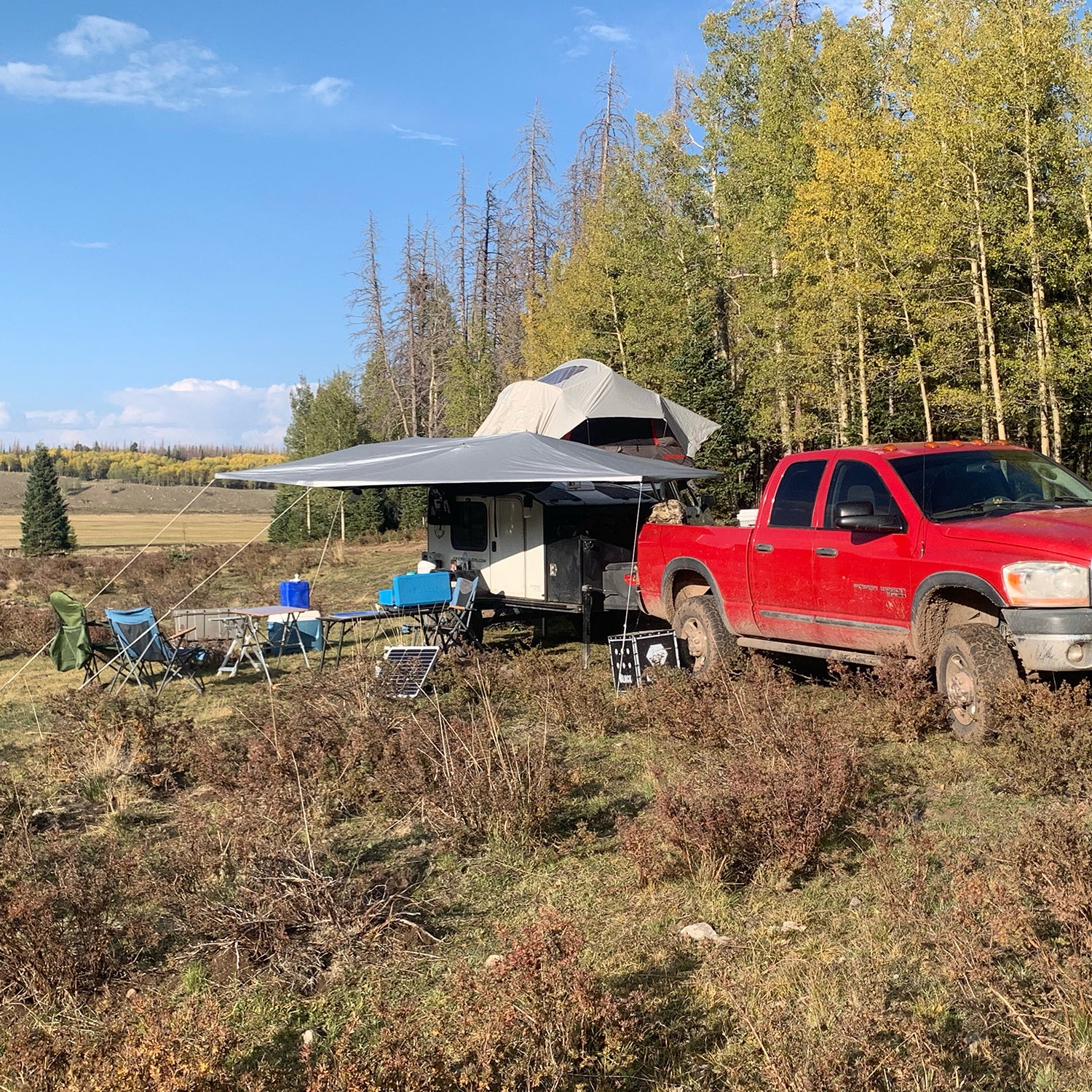I didn’t grow up hunting, but like many of my outdoorsy peers in recent years, I found myself drawn to the sport for a variety of reasons. The ideas of new adventures and being closer to the food I consume were big ones, not to mention the fact that hunting combines many of the things I already loved to do: camp, hike, and be out in the woods.
After almost five years, to say I’m obsessed is putting it lightly. I now find myself routinely leaving for five- to ten-day hunts, chasing everything from high country elk to desert mule deer, and even javelina and turkey. As a result, the vast majority of the camping I do now is while hunting. As with all types of camping, I’ve found there are a few things that’ll go a long way toward making the situation more comfortable—which means you’ll be able to stay out longer and hunt harder.
Shelter
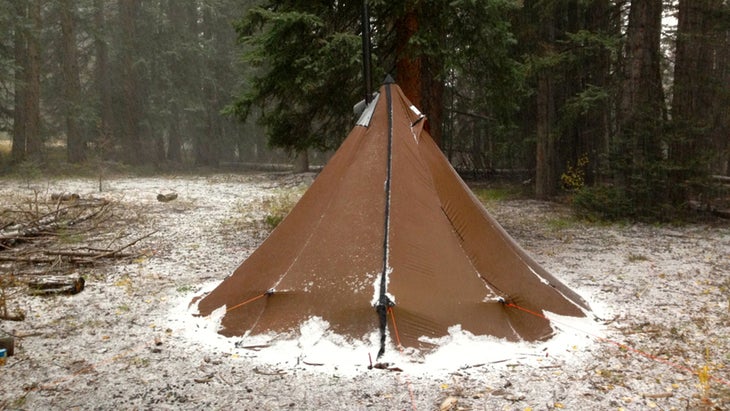
In my experience, hunting requires some sort of basecamp. You’re typically in a remote area, and either hunting right from there in the morning or getting in the truck and driving to a trailhead or other hunting spot each day. I like having a basecamp as opposed to moving your camp each day because that takes time and work—and it’s hard enough to make dinner for yourself at night before crawling into your sleeping bag and passing out.
A regular tent can work fine, but since you’ll likely be there for an extended period of time and to be camping in the fall, I’d opt for something a bit more sturdy. Hunters have been using old-school, canvas-walled guide tents for decades because they provide a ton of space, you can heat them with a wood stove, and they offer great protection from the elements. They do take a while to set up, and they’re heavy. A lighter weight option is the Seek Outdoors 4 Person Ultralight Tipi with Woodstove ($1,189). The key elements to a guide tent are being able to heat it and stand up in it. Both are extremely nice on extended trips.
If you want to upgrade from a tent, a travel trailer makes an excellent option. There’s significantly less setup time than with a tent and significantly more weather protection. Unlike camping out of the back of a truck, rooftop tent, or van, you can leave it set up as a home base, which frees up your truck for driving to different hunting spots. I’ve camped out of my 2019 Hiker Trailer Extreme Offroad teardrop the past three hunting seasons and (with the addition of a heater) it has been wonderful— except for the lack of standing room inside.
If I were looking for a trailer specifically for hunting, I’d want something that was off-road capable, fully insulated, with lots of water storage, solar power for off-grid charging, and plenty of height. There are a lot of options that can work, but Enzy’s Western Big Game Edition (from $25,000) trailer might be the perfect rig for a hunting basecamp. The brand takes standard cargo trailers and converts them into campers designed specifically for hunters. They include features like 32-inch Mud Terrain tires, a 9500 BTU heater, a boot dryer, and locking bow or rifle storage. I’m looking forward to properly testing one out this winter.
Water
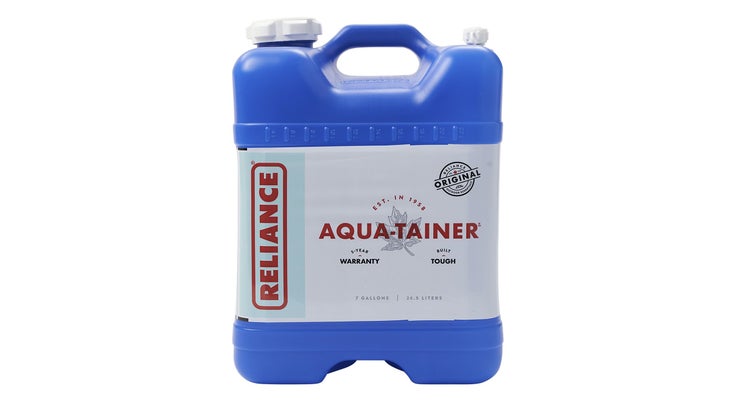
Regardless of whether you go with a trailer or a guide tent, you’ll likely need more water for a hunting-specific base camp than a normal camping trip. My trailer has a 21-gallon tank, and I typically bring along an extra 2.5-gallon jug and fill up a seven-gallon Road Shower for longer trips.
You need more water for a few reasons: first, if you’re chasing something like elk, you’ll be working your ass off all day and will need to have plenty of drinking water. Second, you’re going to want to have plenty of water for doing dishes, and for cleaning up if you or your buddies kill something. Third, not only is it nice to have a shower, but it can also be important for keeping your scent to a minimum, which is important for big-game hunting.
Reliance Aquatainers ($19) are a great, cheap way to carry water, but Dometic’s upcoming Go Hydration Water Jug and Faucet will be a fantastic addition to any hunting camp, thanks largely to a magnetic faucet with a built in pump that’ll give you running water anywhere. I’m also a big fan of Yakima’s Road Shower 7G ($499)—it’s easy to pressurize with a bike pump, and heats up via the sun for a nice hot shower, doing dishes, or cleaning yourself and your knives after harvesting an animal.
A portable, collapsible sink, like the Sol Flat Pack ($20), also makes life a lot easier. You can use it for dishes, as a shower pan, or a bucket for drowning campfires.
Food
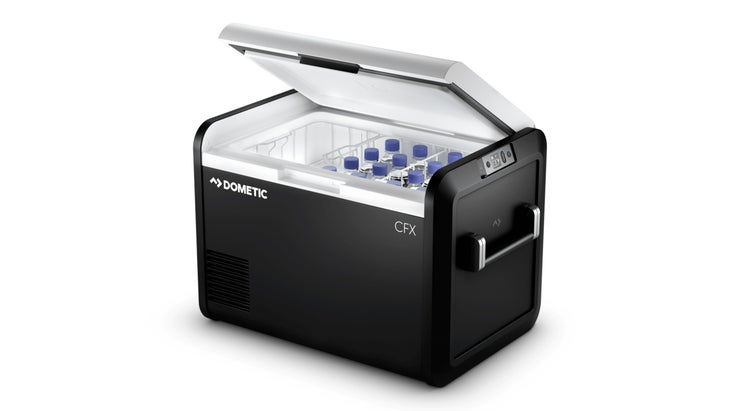
I mentioned doing dishes several times already—that’s because I’m a big believer in eating real food at camp. To save time, I usually beg my wife, who’s an excellent cook, to make hearty meals at home like lasagna, chili, or casseroles and freeze them. Then I’ll let them thaw at camp so it takes minutes to heat something up at dinner time. Doing so lets me avoid eating freeze-dried meals for a week, but keeps cook time to a minimum when I’m exhausted from chasing bugles.
I like to keep my food in a portable fridge/freezer, like Dometic’s CFX3 55IM ($1,200), which keeps everything at the right temperature and makes sure your food doesn’t get soggy as ice melts in a cooler. Then I always pack a Yeti 110 ($500) full of block ice (it melts slower) that’s ready for meat, plus an extra 70- to 110-liter cooler if I’m on an elk hunt. I like having a little extra capacity for beer, extra food, and additional game.
Speaking of food, you should also bring along a seasoning blend of some kind, as well as olive oil and a cast iron skillet ($145) for cooking up some backstraps when you harvest an animal.
Finally, here’s my last food tip for hunting camp: skip the fancy pour-over or french press coffee in the morning and go with a good instant blend instead. You’ll want all the sleep you can get, and there’s less cleanup.
Camp Comfort
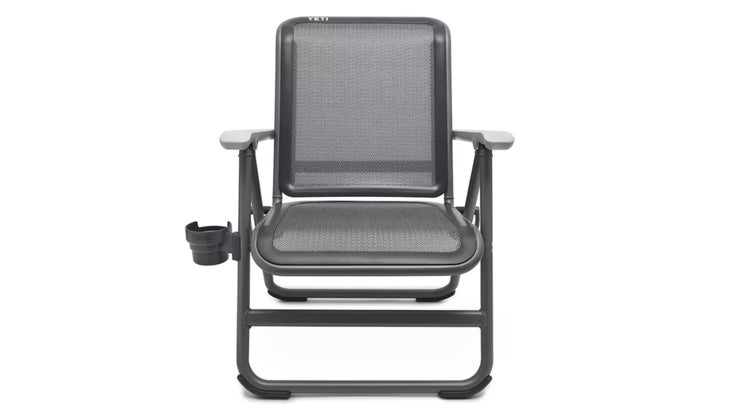
As you’ve probably gathered by now, a hunting base camp is basically just a nice camping spread. You’re hauling in a bunch of gear and camping near your vehicle, so it’s worth bringing along extra comfortable stuff.
Yeti’s Hondo Basecamp chair ($300) is expensive, but it’s very comfortable and definitely the most rugged chair I’ve ever tested. I also recommend bringing along a full-size table, like Front Runner’s Pro Stainless Steel Camp Table ($599), or this budget option ($79). That’ll ensure you have room to cut up elk backstraps for dinner in camp, a stable platform for sighting in your rifle before the hunt, and just hanging around at camp.
A smokeless fire pit like Solo Stove’s Ranger ($270) is a great way to lessen your impact if your campsite doesn’t have a fire ring, and it also keeps you from reeking of campfire smoke in the morning, which is helpful when you’re trying not to be smelled by the thing you’re hunting.
I like a seriously comfortable sleeping pad while I’m hunting, and the Hest Dually ($499) is my new favorite. It fits perfectly in the back of a pickup, or works as a great topper or replacement mattress in an older camper. For a sleeping bag, Sitka’s Kelvin Aerolite 30 ($299) is perfect. It’s not too warm for sleeping inside a heated space, and it actually pairs with other layers if you need more warmth. Best of all, it functions as a layer itself thanks to armholes and a zippered bottom that lets you walk around while wearing it, which is great for cold mornings in camp or crazy cold glassing sessions.
Speaking of staying warm, another great option for heating your camper or tent is the Planar Portable Diesel Air Heater (from $1,685). Unlike a propane Buddy heater, tt’s safe to use inside an enclosed space, and puts out a nice, dry heat so you won’t have to deal with condensation in the morning.
Power and Extras
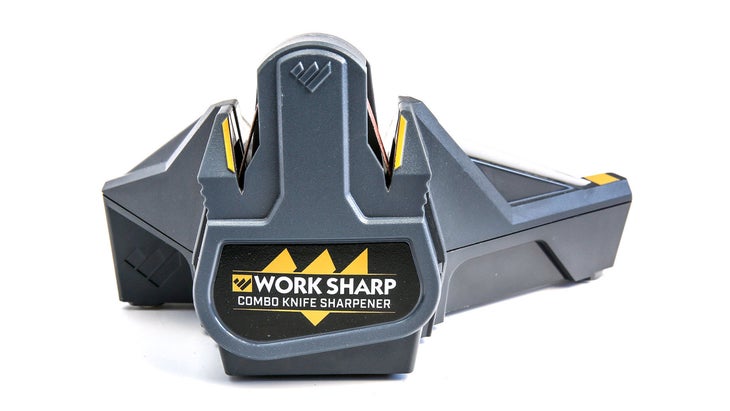
Hunting also requires more gadgets than your average camping trip, like two-way radios, a phone, and some kind of satellite messenger like a Garmin In-Reach. Another benefit of bringing along a camping trailer is that you’d have a built-in way to charge all of them. My trailer has a 100 amp hour lithium battery and 200 watts of solar on top, and that was enough to power the Dometic fridge, diesel heater, LED lights, rooftop fan and charge my electronics while on a 10-day, completely off-grid elk hunt last year.
If you need more power, or don’t have a camper, it’s tough to beat Goal Zero’s Yeti line of portable power stations and portable solar panels. It’s also nice to have somewhere to plug in an electric knife sharpener, like Work Sharp’s Combo Knife Sharpener ($60) at camp, especially if your group has multiple tags to fill.
The takeaway is this: a hunting basecamp should be comfortable and simple. If you can set up a nice one on your first day out and not have to worry about it again until it’s time to leave. Then you’ll be well rested and able to focus all of your energy on coming home with a freezer’s worth of meat and some of the best stories you’ll ever tell.


